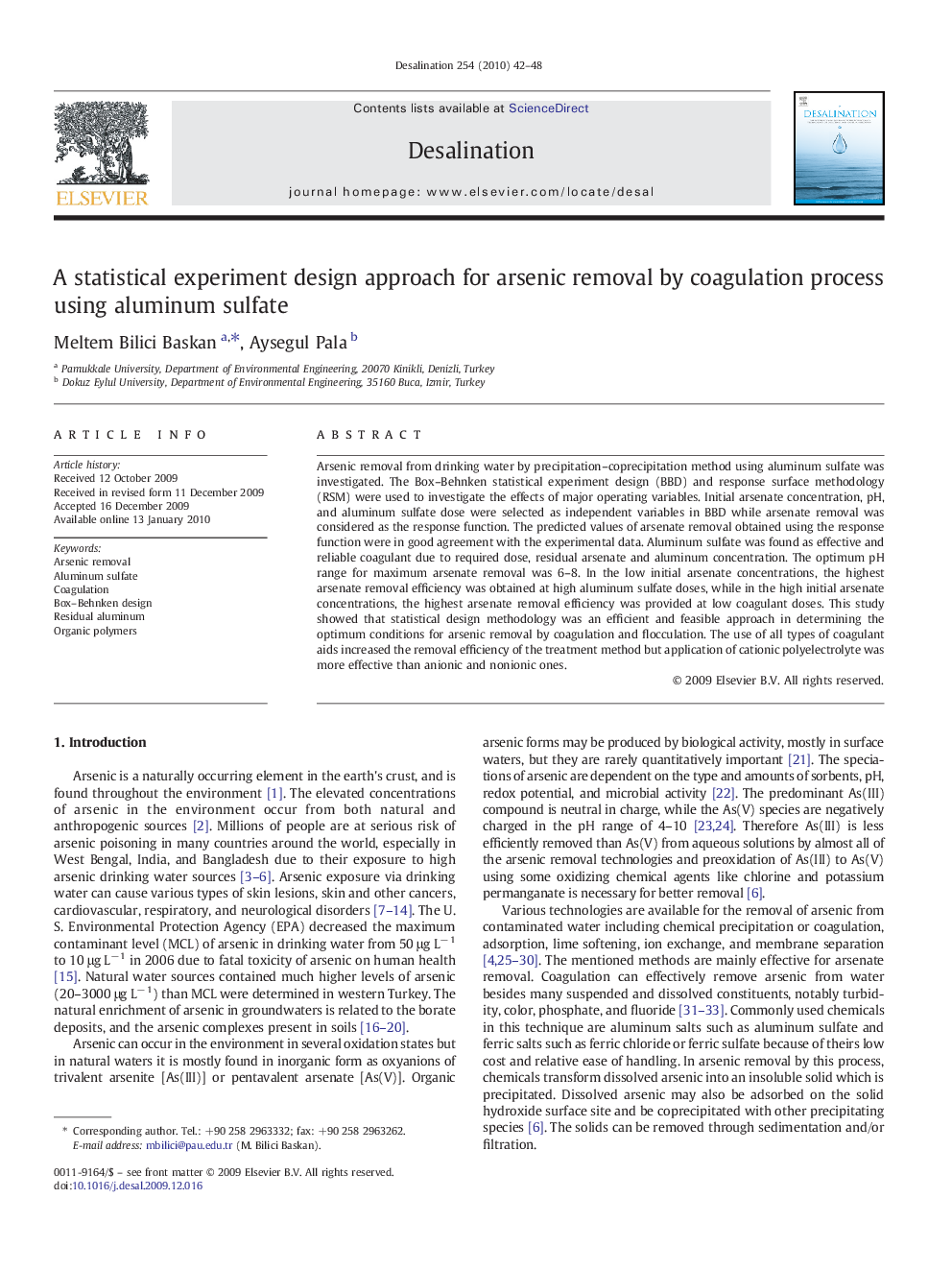| کد مقاله | کد نشریه | سال انتشار | مقاله انگلیسی | نسخه تمام متن |
|---|---|---|---|---|
| 625915 | 1455437 | 2010 | 7 صفحه PDF | دانلود رایگان |

Arsenic removal from drinking water by precipitation–coprecipitation method using aluminum sulfate was investigated. The Box–Behnken statistical experiment design (BBD) and response surface methodology (RSM) were used to investigate the effects of major operating variables. Initial arsenate concentration, pH, and aluminum sulfate dose were selected as independent variables in BBD while arsenate removal was considered as the response function. The predicted values of arsenate removal obtained using the response function were in good agreement with the experimental data. Aluminum sulfate was found as effective and reliable coagulant due to required dose, residual arsenate and aluminum concentration. The optimum pH range for maximum arsenate removal was 6–8. In the low initial arsenate concentrations, the highest arsenate removal efficiency was obtained at high aluminum sulfate doses, while in the high initial arsenate concentrations, the highest arsenate removal efficiency was provided at low coagulant doses. This study showed that statistical design methodology was an efficient and feasible approach in determining the optimum conditions for arsenic removal by coagulation and flocculation. The use of all types of coagulant aids increased the removal efficiency of the treatment method but application of cationic polyelectrolyte was more effective than anionic and nonionic ones.
Journal: Desalination - Volume 254, Issues 1–3, 15 May 2010, Pages 42–48